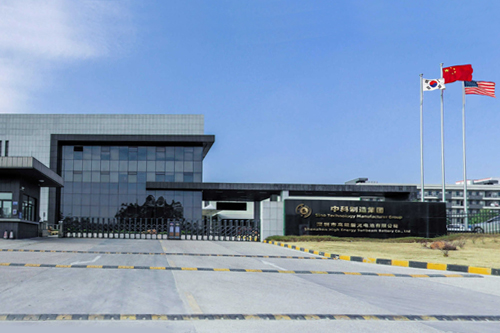The bumpy lithium battery technology is still on the way to maturity
The invention of lithium batteries has a history of 49 years, but the
safety, energy density and price are still not close to the people. Looking at
various information, all of them say that the process of lithium batteries is
complicated, there are many preparation processes, thermal runaway is prominent,
and failure analysis and verification are difficult to verify.
The invention of lithium batteries has a history of 49 years, but the
safety, energy density and price are still not close to the people. Looking at
various information, all of them say that the process of lithium batteries is
complicated, there are many preparation processes, thermal runaway is prominent,
and failure analysis and verification are difficult to verify.
First, let’s popularize the knowledge about lithium batteries. If you don’t
like, skip it.
The capacity of lithium batteries is determined by the lithium ion content
in the positive active material. Excessive positive electrode and uneven lithium
ion gradient distribution in the electrolyte will precipitate lithium and
produce dendrites, which can easily cause safety threats. The electrolyte plays
a role in transporting lithium ions, and the amount must be guaranteed. The
moisture in the battery will consume lithium ions and affect the capacity. At
the same time, it is easy to react with the electrolyte and cause bloating. The
diaphragm plays a filtering role and cannot be damaged, otherwise the positive
and negative electrodes will come into contact and short circuit will occur.
If operated at high temperatures, the battery capacity will decrease faster
and the lifespan will be shortened.
Low temperature lithium iron phosphate battery 3.2V 20A -20℃ charging, -40℃
3C discharge capacity ≥70%
In particular, the abuse of lithium batteries is obvious, mainly thermal
abuse, electrical abuse and mechanical abuse. Excessive heat and fire exposure
are examples of thermal abuse. Overcharge, overdischarge, and external/internal
short circuits are electrical abuses. Mechanical abuse includes impact,
penetration, and bending.
All in all, for lithium battery production, the most important thing is to
learn failure analysis. The methodology is to find the cause of quality
problems, find the correct conclusion in a short period of time, and choose
practical measures.
Failure analysis is very simple and mainly includes: clarifying the
analysis object, determining the failure mode, studying the failure mechanism,
determining the cause of the failure, and proposing preventive measures
(including design improvements).
Whether a failure event is a major accident or a minor failure, the reasons
always include six aspects: operators, mechanical equipment systems, materials,
manufacturing processes, environment and management. The solutions are as
follows.
First, comparison methods. Select a system that has not failed and can be
compared with the failed system to identify differences. This will help identify
the cause of the failure as quickly as possible.
Low temperature and high energy density 18650 3350mAh-40℃ 0.5C discharge
capacity ≥60%
Charging temperature: 0~45℃ Discharge temperature: -40~+55℃ Specific
energy: 240Wh/kg -40℃ Discharge capacity retention rate: 0.5C Discharge capacity
≥ 60%
Click for details
Second, historical method. The objective basis of the historical method is
the movement changes and causal constraints of the material world. It is to
infer the possible reasons for the current failure based on the past performance
and change patterns of the equipment under the same service conditions.
Third, logical method. It is to analyze, compare, synthesize, and summarize
based on background information (design, materials, manufacturing conditions,
etc.) and failure site investigation materials as well as information obtained
from analysis and testing, to make judgments and inferences, and then to derive
possible causes of failure.
Regarding lithium battery failure, it is mainly divided into two
categories: performance failure and safety failure.
Performance failure is when the performance of lithium batteries fails to
meet the usage requirements and related indicators. It mainly includes capacity
attenuation or diving, short cycle life, poor rate performance, poor
consistency, easy self-discharge, high and low temperature performance
attenuation, etc.
Safety failure refers to the failure of lithium batteries with certain
safety risks due to improper use or abuse, mainly including thermal runaway,
flatulence, leakage, lithium precipitation, short circuit, expansion and
deformation, etc.
Fundamentally, however, failure boils down to the destruction of material
properties and structure.
The author has a master's degree in materials and knows that behind all
great creations are material innovations.
Material failure mainly refers to abnormalities in material structure,
properties, morphology, etc. and mismatch between materials.
For example, the particles of the cathode material are broken due to uneven
stress on the material caused by inconsistent local Li+ deintercalation rates.
The silicon anode material is broken and pulverized due to volume expansion and
contraction during charging and discharging. The electrolyte is decomposed or
deteriorated due to the influence of humidity and temperature. The solvent
co-embedded between the graphite anode and the additive propylene carbonate (PC)
in the electrolyte. The problem is lithium precipitation caused by too small N/P
(the ratio of the capacity of the negative electrode sheet to the capacity of
the positive electrode sheet).
For today's moderately popular electric vehicles and hybrid vehicles, the
core technology is the battery. Compared with 3C consumer batteries, although
power batteries are expensive and have poor safety performance, they have high
specific energy, long cycle life, and wider application scenarios.
Wide sea diving, sky high the birds to fly. As the times progress, power
battery technology is changing with each passing day, and future improvements
should focus on capacity and structure.
One thing is certain, no matter which technical route the battery
manufacturer adopts, it must meet the conditions of high safety, wide range of
environmental temperature differences, strong charging and discharging
functionality, good rate discharge usability, and low cost.
Read recommendations:
L822 32A/29A
Five advantages of lithium iron phosphate battery
Innovative Breakthroughs in High-Energy-Density Lithium Batteries
household energy storage lithium battery
NiMH battery pack manufacturer











































 360° FACTORY VR TOUR
360° FACTORY VR TOUR
 Whatsapp
Whatsapp
 Tel
Tel Email
Email TOP
TOP